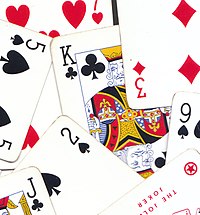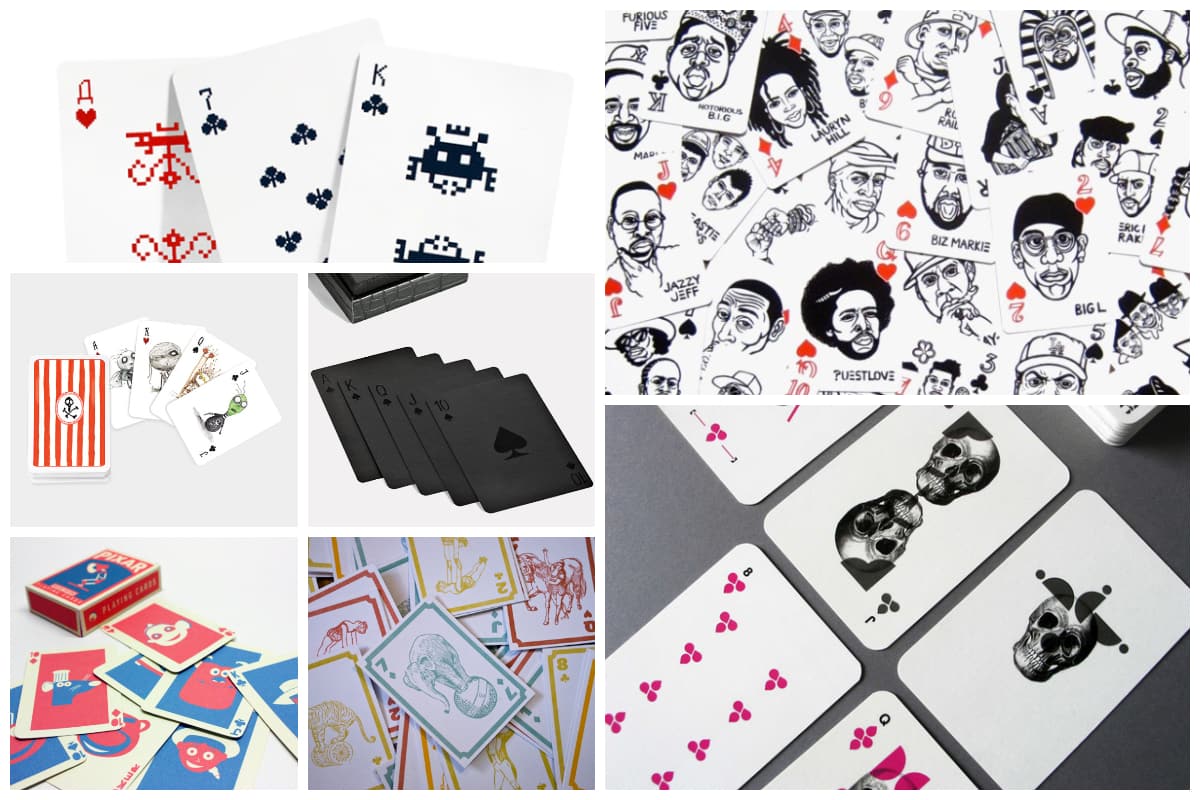Poker Patterns Names

Whether the patterns come from the command line or from a file doesn't matter. Note that the strings are substrings: if you pass a+b as a pattern then a line containing a+b+c is matched. If you want to search for lines containing exactly one of the supplied strings and no more, then pass the -x option. Download 878 playing card back free vectors. Choose from over a million free vectors, clipart graphics, vector art images, design templates, and illustrations created by artists worldwide! The standard 52-card deck of French-suited playing cards is the most common pack of playing cards used today. In English-speaking countries it is the only traditional pack used for playing cards; in many countries of the world, however, it is used alongside other traditional, often older, standard packs with different suit symbols and pack sizes.
- General principles
- Betting limits
- Principal forms
- Stud poker
- Community-card poker
- House-banked games

Our editors will review what you’ve submitted and determine whether to revise the article.
Join Britannica's Publishing Partner Program and our community of experts to gain a global audience for your work! Albert H. MoreheadSee All Contributors
Poker, card game, played in various forms throughout the world, in which a player must call (i.e., match) the bet, raise (i.e., increase) the bet, or concede (i.e., fold). Its popularity is greatest in North America, where it originated. It is played in private homes, in poker clubs, in casinos, and over the Internet. Poker has been called the national card game of the United States, and its play and jargon permeate American culture.
Although countless variants of poker are described in the literature of the game, they all share certain essential features. A poker hand comprises five cards. The value of the hand is in inverse proportion to its mathematical frequency; that is, the more unusual the combination of cards, the higher the hand ranks. Players may bet that they have the best hand, and other players must either call (i.e., match) the bet or concede. Players may bluff by betting that they have the best hand when in fact they do not, and they may win by bluffing if players holding superior hands do not call the bet.
General principles
There are forms of poker suitable to any number of players from 2 to 14, but in most forms the ideal number is 6, 7, or 8 players. The object is to win the “pot,” which is the aggregate of all bets made by all players in any one deal. The pot may be won either by having the highest-ranking poker hand or by making a bet that no other player calls. The following principles apply to nearly all forms of poker.
Cards
Poker is almost always played with the standard 52-card deck, the playing cards in each of the four suits (spades, hearts, diamonds, clubs) ranking A (high), K, Q, J, 10, 9, 8, 7, 6, 5, 4, 3, 2, A (low only in the straight [a series of five cards numbered consecutively] or straight flush [a series of five cards numbered consecutively within the same suit] 5-4-3-2-A and in certain variants described below).
In social play, especially in “dealer’s choice” (i.e., a card-playing session in which each player takes a turn at dealing the cards and selecting the game), certain cards may be designated wild cards. A wild card stands for any other card its holder wishes to name. There are many methods of introducing wild cards into the game. The most popular are:
- Joker. A 53-card pack is used, including the joker as a wild card.
- Bug. The same 53-card pack including the joker is used, but the joker—here called the bug—counts only as a fifth ace or to fill a flush [a series of five cards of the same suit], a straight, or certain special hands.
- Deuces wild. All four deuces (2s) are wild cards.
- One-eyes. In the standard pack the king of diamonds, jack of spades, and jack of hearts are the only cards shown in profile. They are often designated as wild cards.
Rank of poker hands

The rank of standard poker hands is determined by their odds (probability). Two or more identical hands tie and divide any winning equally. The suits have no relative rank in poker. When there is any wild card in the game, the highest possible hand is five of a kind, which beats any straight flush. When there are several wild cards, there may be identical fours of a kind or threes of a kind, in which case ties are broken by the highest unmatched cards or secondary pairs (in a full house [a five-card hand made up of three of a kind and a pair]).
| poker hand | number of ways the hand can be made | approximate odds of getting the hand in five cards |
|---|---|---|
| royal flush | 4 | 1 in 649,740.00 |
| straight flush | 36 | 1 in 72,193.33 |
| four of a kind | 624 | 1 in 4,165.00 |
| full house | 3,744 | 1 in 694.16 |
| flush | 5,108 | 1 in 508.80 |
| straight | 10,200 | 1 in 254.80 |
| three of a kind | 54,912 | 1 in 47.32 |
| two pairs | 123,552 | 1 in 21.03 |
| one pair | 1,098,240 | 1 in 2.36 |
| no pair | 1,302,540 | 1 in 1.99 |
Deal
At the start of the game, any player takes a pack of cards and deals them in rotation to the left, one at a time faceup, until a jack appears. The player receiving that card becomes the first dealer. The turn to deal and the turn to bet always pass to the left from player to player. For each deal, any player may shuffle the cards, the dealer having the last right to shuffle. The dealer must offer the shuffled pack to the opponent to the right for a cut. If that player declines to cut, any other player may cut.
A professional dealer is used in poker clubs, casinos, and tournament play, where a round disc (known as a dealer button) is passed clockwise each hand to indicate the nominal dealer for betting purposes. Also, such environments almost invariably charge the players either by setting an hourly rental fee for their seats or by “raking” a small percentage (say, 5 percent) from each pot.
Betting procedure
In each deal there are one or more betting intervals according to the specific poker variant. In each betting interval, one player, as designated by the rules of the variant being played, has the privilege or obligation of making the first bet. This player and each player in turn after him must place in the pot the number of chips (representing money, for which poker is almost invariably played) to make his total contribution to the pot at least equal to the total contribution of the player before him. When a player does this, he is said to be in the pot, or an active player. If a player declines to do this, he discards his hand and is said to drop or fold, and he may no longer compete for the pot.
Poker Patterns Graph
Before the deal, each player may be required to make a contribution to the pot, called an ante. In each betting interval, the first player to make a bet is said to bet, a player who exactly meets the previous bet is said to call, and a player who bets more than the previous bettor is said to raise. In some variants, a player is permitted to check, which is to stay in without betting, provided no other player has made a bet in that betting interval. Since a player cannot raise his own bet, each betting interval ends when the betting turn has returned to the person who made the last raise or when all players have checked.
At the end of each betting interval except the last, dealing is resumed. At the end of the last betting interval, there is the “showdown,” in which each active player shows his full hand, and the highest-ranking hand wins the pot.
Betting limits
There are “no-limit” or “sky’s-the-limit” games, but in practice most poker games place some limit on what one may bet in any game. There are three popular methods.
Fixed limit
Poker Patterns Names Chart
In fixed-limit games, no one may bet or raise by more than the established limit. In draw poker the limit is usually twice as much after the draw as before—for example, two chips before the draw, four chips after. In stud poker the limit is usually twice as much in the final betting interval as in previous betting intervals. (The higher limit applies also when any player’s exposed cards include a pair.) These respective forms of the game are described below. In a fixed-limit game a limit is usually placed on the number of raises that may be made in any betting interval.
Pot limit
In pot-limit contests, a player may bet or raise by no more than the amount in the pot at the time the bet or raise is made. When raising, the player may first put in the pot the number of chips required to call the previous bet and then raise by the number of chips in the pot. When pot limit is played, it is customary also to place a maximum limit on any bet or raise, regardless of the size of the pot.
Table stakes
Poker Patterns Names Generator
This method most closely approximates the no-limit game. Each player’s limit is the number of chips he has on the table at the beginning of the deal. He may not bet more, but for this amount he may call any higher bet (go “all in”) and compete for the pot in the showdown. Other players having more chips may continue to bet, but their further bets go into one or more side pots in the manner decided among the players who contributed fully to the side pot. When a player drops out of any side pot, he drops out of the original pot as well, in effect surrendering his rights in the original pot to the player whose later bet he did not call. Thus, there may be different winners of the main pot and various side pots.
- key people
- related topics